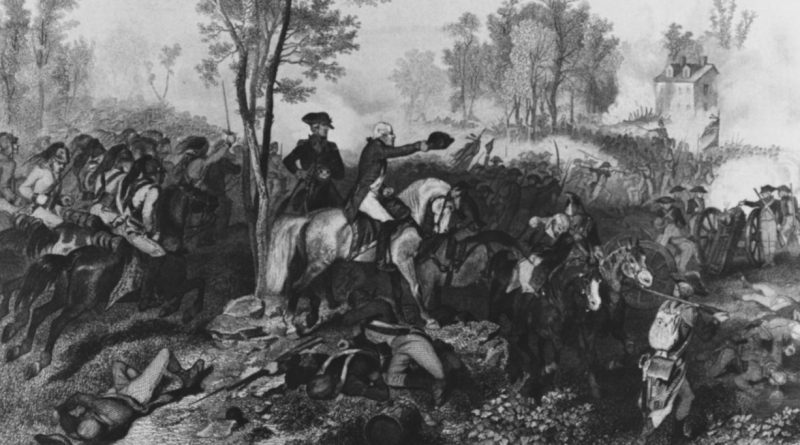September 8 in U.S. military history
1740: Some 800 volunteers from the American colonies board transports to take part in the disastrous British/American colonial expedition to capture the Spanish territory of Cartagena (modern-day Colombia).
1781: 2,000 Continental soldiers commanded by Maj. Gen. Nathanael Greene meet with Lt. Col. Alexander Stewart’s 2,200-man force of British troops near present-day Eutawville, S.C.. Although both sides claim victory in the Battle of Eutaw Springs (featured image), the British must abandon much of their previously gained ground in the south.
1863: When the Union attempts an amphibious invasion in Texas to prevent the Mexican government from supplying the Confederacy, well-trained artillerymen at Fort Griffin blast the Union ships as they unsuccessfully attempt to navigate the shallow waters of the Sabine River. Two gunboats are captured and the Union suffers 200 casualties in one of the most one-sided engagements of the Civil War.
1925: As Destroyer Squadron 11 cruises from San Francisco to San Diego, several ships run aground at Honda Point. Unusually strong swells and currents from a massive earthquake in Japan, together with darkness and fog contribute to the largest loss of U.S. Navy ships during peacetime. Seven destroyers are destroyed, another two damaged, and 23 sailors die.
1939: Just days after Germany invades Poland, kicking off what will become World War II, President Franklin Roosevelt declares a national emergency – increasing the size of the Armed Forces – in part by recalling many retired enlisted troops and officers.
1942: The 1st Raider Battalion lands on Guadalcanal and begins operations to disrupt the Japanese advance by attacking supplies and a radio tower, despite orders to avoid contact.
1943: When Gen. Dwight D. Eisenhower publicly announces Italy’s surrender, the Nazis invade, beginning a bloody campaign to disarm their former ally and prevent Italy from falling into Allied hands. The next day, eight divisions of U.S. and British soldiers land at Salerno.
1945: U.S. troops land at Inchon to establish a military transitional government and to prevent further Soviet expansion in Korea. A month earlier, the Soviet Union violated an agreement not to declare war on Japan and had invaded Japanese-held Korea. Following Japan’s surrender, the new country was split at the 38th Parallel with the Russians administering the north and the Americans, the south. Five years later, North Korea will invade the South, once both superpowers have left the peninsula, to reunite Korea under the flag of communism.
